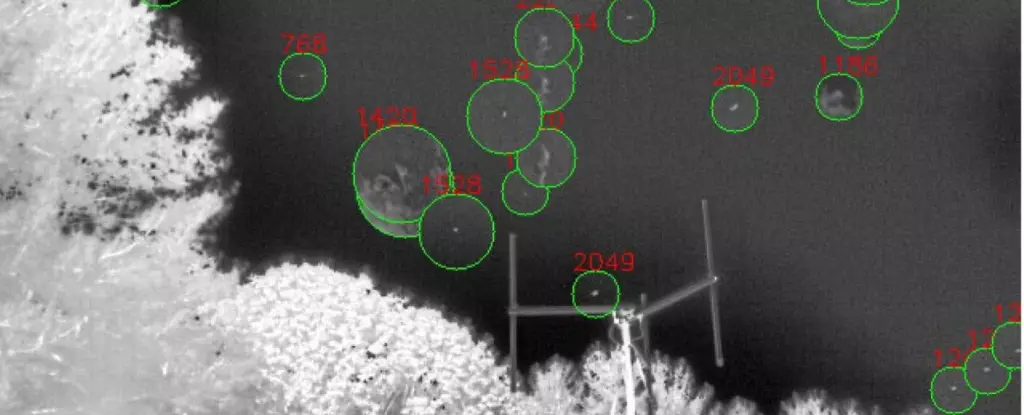The quest to understand Unidentified Aerial Phenomena (UAP) has gained renewed vigor, especially since the Office of the Director of National Intelligence (ODNI)—in an unprecedented move—declassified crucial reports in 2021. The intersection of defense, national security, and scientific inquiry has ushered in a dynamic era of research. Yet, despite the interest and initiative from the Department of Defense and their annual reports through the All-domain Anomaly Resolution Office (AARO), there remains significant ambiguity due to a lack of publicly accessible scientific data. This gap emphasizes not just a need for transparency but a call for innovative research methods, which is precisely what the recent study led by the Harvard-Smithsonian Center for Astrophysics (CfA) and the Galileo Project aims to harness.
Introducing Dalek: A Leap Forward in Technology
At the forefront of this new approach is an innovative instrument known as Dalek, aptly named after the iconic adversaries from the beloved *Doctor Who* series. The proposal, spearheaded by Laura Domine from Harvard University, introduces an All-Sky Infrared Camera aimed at detecting potential evidence of extraterrestrial crafts. This ambitious endeavor, presented at the 2025 Lunar and Planetary Science Conference, illustrates a multi-institutional effort that integrates talents from various fields to strengthen our understanding of UAPs.
This spotlight on Dalek underscores more than just a creative nomenclature. It represents a systematic methodology to enhance detection capabilities for elusive phenomena often lost in datasets riddled with noise. By employing cutting-edge technologies and a multimodal approach—an idea echoed in NASA’s recommendations from a 2023 independent study—the project sets a higher standard for future detection efforts.
Engineering the Vision: Multimodal Observatory Insights
The core of the Dalek proposal revolves around the creation and utilization of a multimodal, multispectral ground-based observatory. This initiative elevates the science of observation beyond simple imaging; it aims to capture a holistic view of UAP events, considering elements like shape, color, sound, and other characteristics. As articulated by Professor Avi Loeb, the Head of the Galileo Project, this observatory can gather empirical data that complements or challenges classified information held by various governmental agencies. While the latter often encounters classification hurdles, it is crucial to recognize that the night sky remains an open canvas for scientific inquiry.
The implications of this research are profound. Current techniques often rely on expensive military-grade sensors and secretive protocols, and the transition to publicly accessible data could democratize the search for extraterrestrial life. It has the potential to transform our understanding of UAPs into an inclusive scientific endeavor where even citizen scientists might participate in the grand quest for life beyond Earth.
Creating a Database for Knowledge: Analyzing UAPs
As the Galileo Project sets to operate three observatories—each capable of detecting around 100,000 objects monthly—the implications for data collection and analysis are monumental. The goal is not just to amass a large dataset but to intelligently analyze it using machine learning and object detection algorithms, such as YOLO and SORT. This approach extends beyond identifying known objects to honing in on anomalies.
In their initial report, the team revealed that it successfully tracked approximately half a million objects within the first five months of operation. An astonishing 16% of these were flagged as potential anomalies, undergoing rigorous examination, which is a stark contrast to the approximately 3% ambiguity rate reported by governmental bodies. This stark statistical difference not only showcases the project’s efficacy but underscores a groundbreaking opportunity for discovery—highlighting that even small probabilities of unique findings can yield groundbreaking scientific discoveries.
Pushing Boundaries: The Future of UAP Research
What’s revolutionary in this research approach is the ambition to measure the distance and trajectory of detected objects—allowing for a more refined classification of UAPs. The future could see a triangulation of multiple detectors to enable a clearer understanding of object motion. In essence, constructing a model that distinguishes between human-made phenomena and possible extraterrestrial technology could redefine our understanding of the universe.
As Professor Loeb passionately articulates, finding even one anomaly that displays technology beyond our current comprehension would be nothing short of revolutionary. While skepticism and questions continue to cloud the discourse surrounding UAPs, efforts like the Dalek initiative represent an optimistic approach toward scientific rigor and transparency. It encourages collaboration across scientific communities while daring to explore the remarkable unknown, hopefully leading to confirmation of advanced technological signs from civilizations beyond our Earth.
In embracing this frontier with vigor and creativity, our scientific endeavors may finally unveil the profound truth about our place in the cosmos.


Leave a Reply